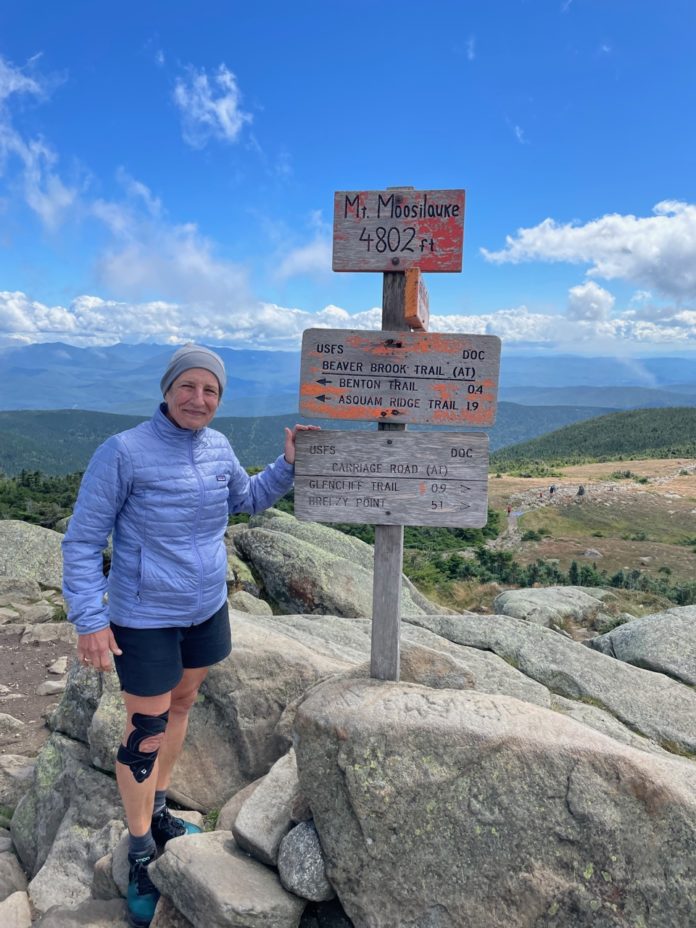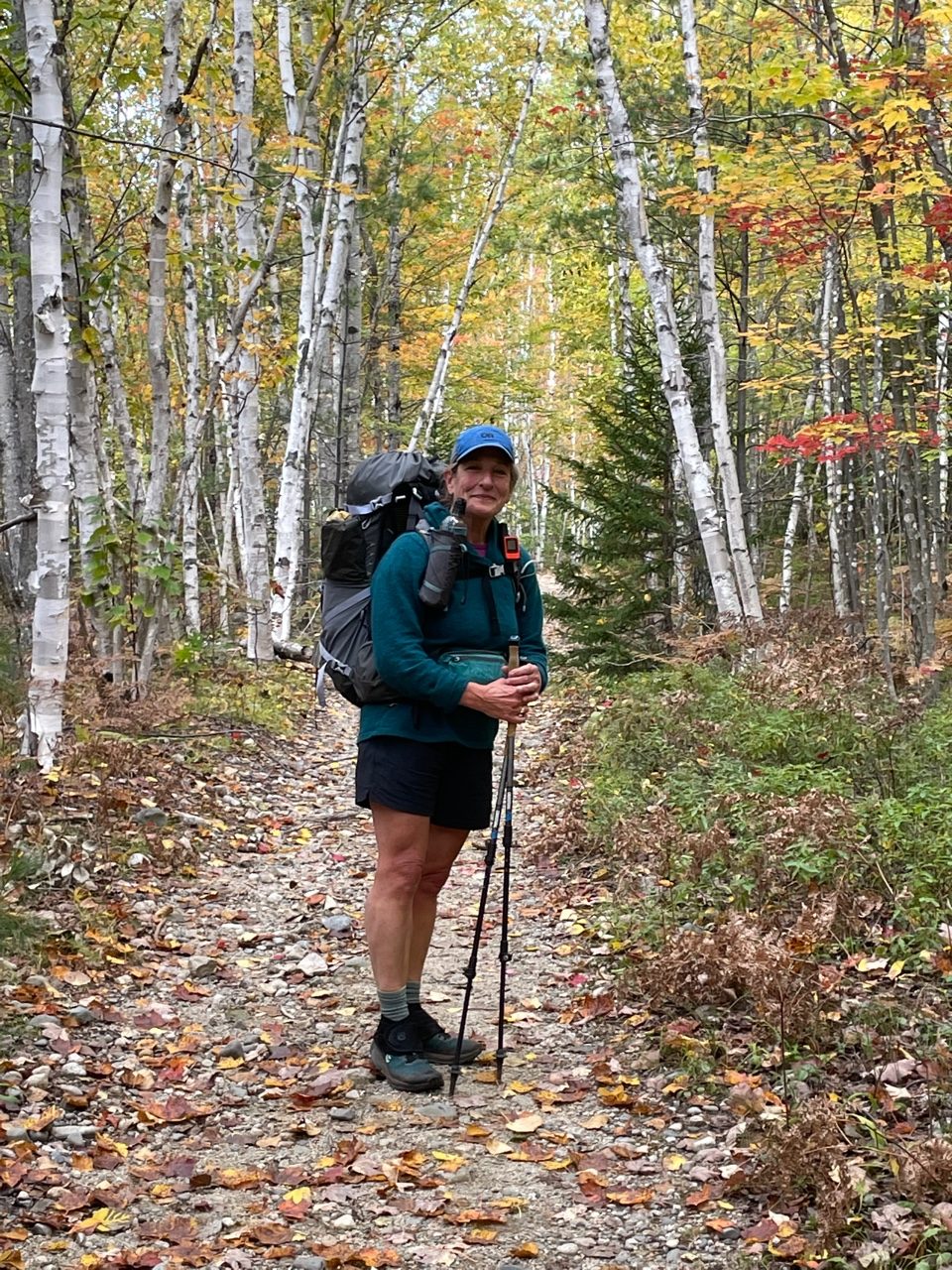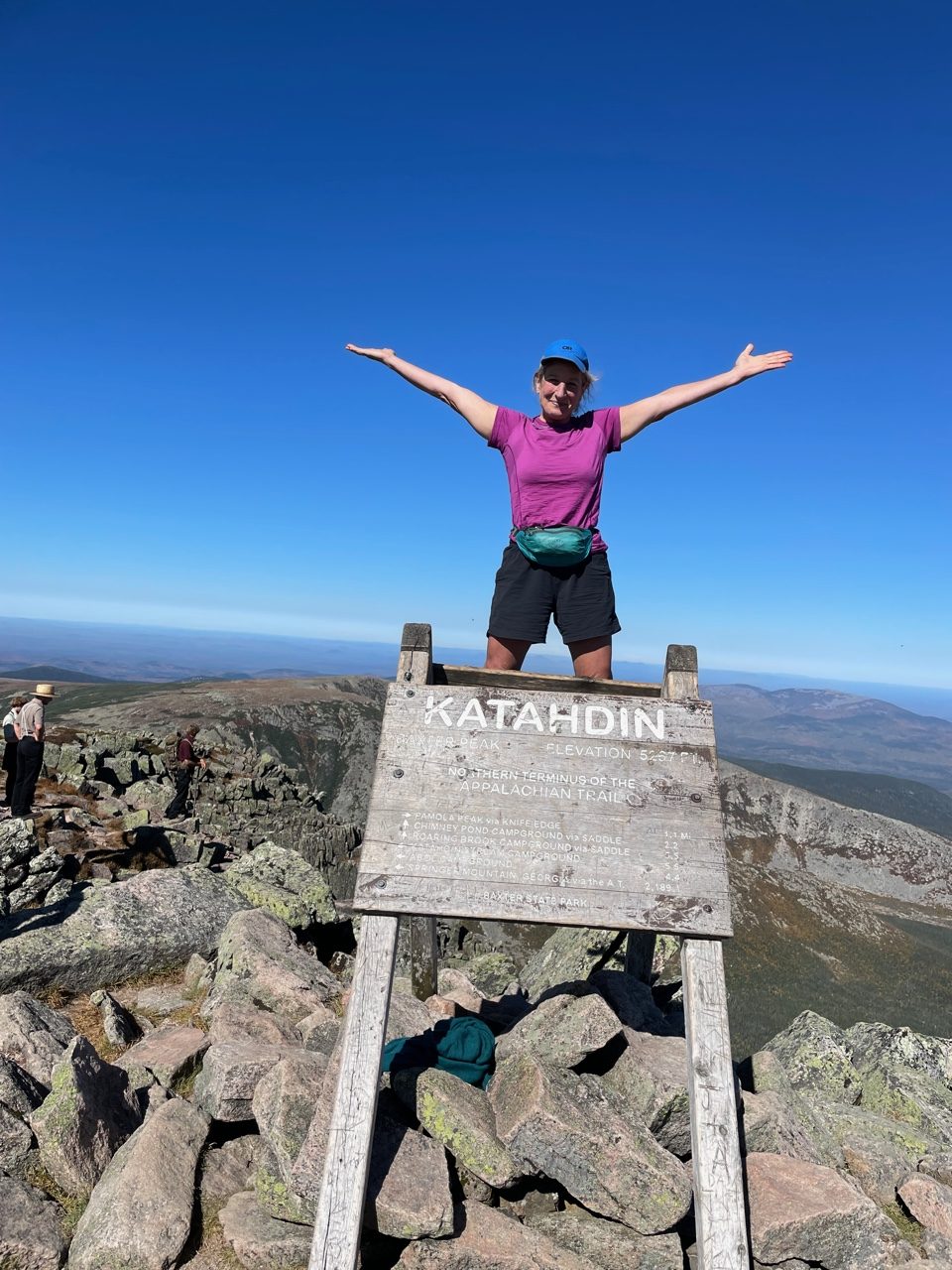
Over the summer of 2022 Deb Adams completed the 2,000-mile trek on the Appalachian Trail. The conversation begins with food, which was certainly a challenge when trying to travel light while burning up so many calories by hiking 15 miles a day.
What kind of food did you eat on the Trail?
“Breakfast: Coffee or tea, breakfast/protein bar.
Lunch: Tortillas with peanut butter and jelly, or cheese, dried fruit, trail mix, another protein bar, M&M’s, Gatorade.
Dinner: Freeze dried camp meals (got sick of them by Pennsylvania), Ramen soup mixed with whatever, tuna packets, miso soup, nuts, chocolate, tortillas, and hummus.
(Other people ate the “Knorr Sides” packets, but I didn’t as most have meat flavoring and too much potato for me.)
Lots of fatty snacks — nuts, peanut butter cookies, almond butter, butter, gummy bears, chocolate, corn chips. We’d bring left-overs from town too — hard boiled eggs, sandwiches, slices of pizza, bagged salad, yogurt, sliced fruit, avocado, etc. These we usually ate the first day out because they were either very perishable or too heavy to carry for long. We usually had 3 to 5 days’ worth of food.”
What was a typical day like?
“A typical day began at around 6 am. (The birds usually woke me up.) Pack up my tent and gear, eat breakfast and head out by 7, 7:30 or 8, depending on how far I planned to go that day. Hike for a couple of hours, stop for a snack. Get to a place and rest for lunch. More hiking …. stop for more snacks. More hiking, look for a stealth spot or find a spot near a shelter to pitch my tent. Set up camp. Make dinner, hang my food bag to keep bears away. Climb into my sleeping bag, look over the trail app to figure out the next day’s goal and be asleep by 8:30.”

How did you re-supply and was it a challenge?
“I’d re-supply every 3 to 5 days. Usually, we’d get into town and head to the grocery store. If there was a group of us, we’d share/divide up what we bought because one is always thinking of pack weight. You can share a big bag of M&M’s and someone else will have extra tortillas. At the start I tried to send boxes ahead to post offices. It was hard to coordinate Post Office hours a lot of the time, so I stopped and depended on grocery stores. After groceries came laundry and showers, then a real meal at a restaurant.”
Any problems with blisters or injuries?
“I had some plantar fasciitis for a month to six weeks. Whenever I had the chance, I iced or soaked my feet and it eventually went away. I had one blister on my heel the lasted a few days and that was it for the whole hike. The key is to dial in your socks and trail shoes, take care of your feet. I fell once in New Hampshire, bruised my hip. Nothing else to complain about. I stayed healthy the whole hike.”
Any unusual events?
“The Naked Hiker. He wore only boots and a day pack. We passed each other on a boardwalk type part of the trail in Vermont (similar to the planks for trails here). All I said was ‘hello’ and kept going. He stopped and asked if he had ‘offended me’ (with a weird smile). I said ‘nope,’ and kept on walking.”
Best part and worst part?
“The best part was the diverse hiker community. There were all kinds of people hiking — all ages, from all over and for all kinds of reasons. You learn trail names, wind up leap frogging the trail with them, sharing food, going into town together, etc. Everyone supports one another. The worst part was the lack of variety in the food we carried. I longed for fresh fruit and good coffee.”

Most challenging part?
“The trail got very challenging in New Hampshire. Steep ascents, no switchbacks, and steep descents every day. The trail was also very muddy, then rocky and then rooty. You had to watch your feet all the time, even on the rare flat stretches. By comparison, you could do 18 miles in New York, Connecticut, Massachusetts no problem. You could only get seven to 10 miles in New Hampshire.”
Prettiest part?
“The views in New Hampshire and Maine were breathtaking — much like Alaska, you can see forever. The southern part of the trail is rhododendron territory. When they are in flower, they are beautiful! They create these tunnels for long stretches of the trail, hence the name ‘the green tunnel.’”
Other thoughts?
“There is nothing like reducing life down to the few things you can carry on your back and knowing that all you need to do for the day is walk. It took about 400 miles to get my trail legs, then it was a matter of getting up every day, putting my pack on and moving forward.”
Which she surely did. Congratulations Deb, on this marvelous achievement.





